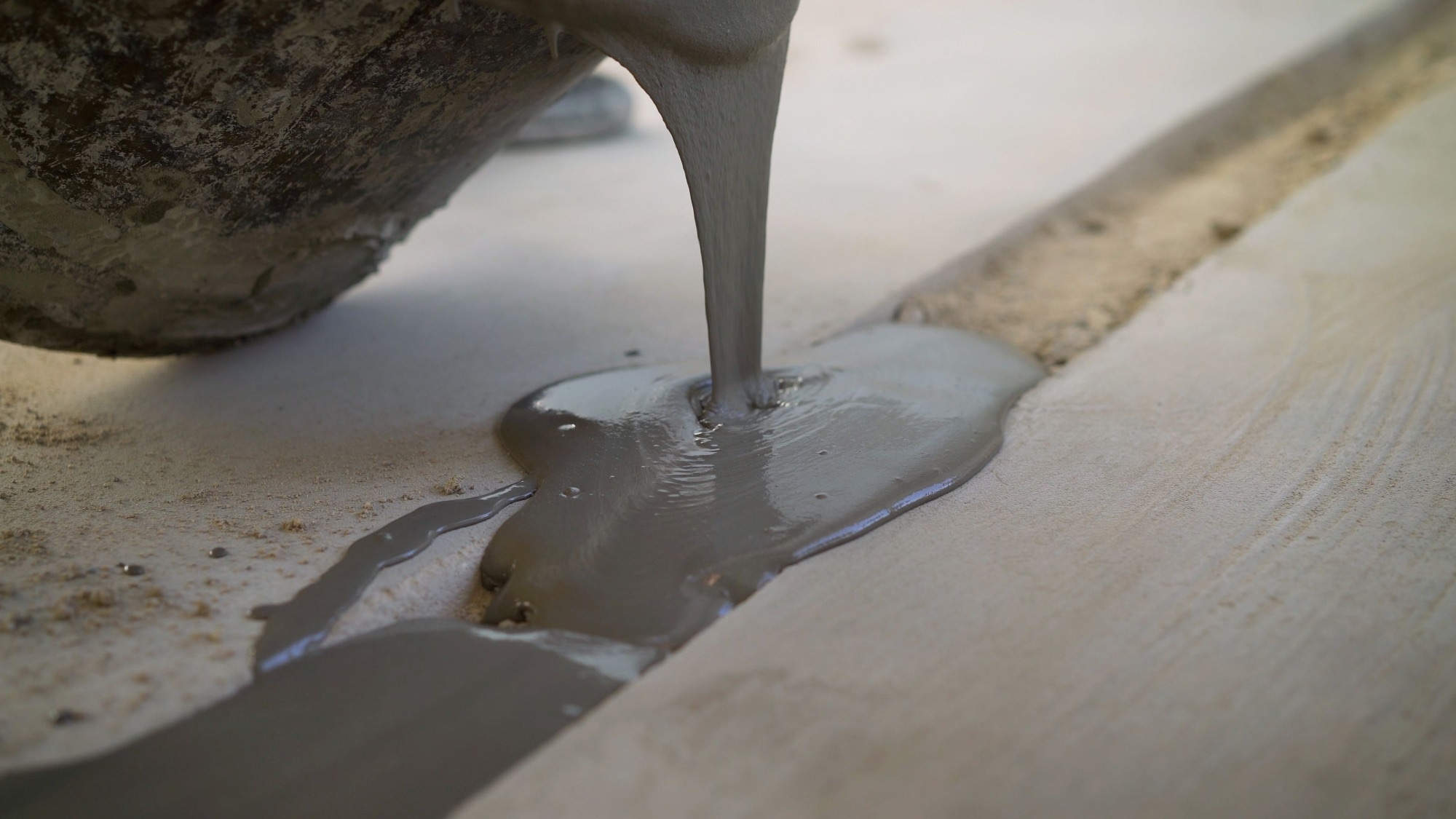 By Nidhi DhullReviewed by Susha Cheriyedath, M.Sc.May 27 2024
By Nidhi DhullReviewed by Susha Cheriyedath, M.Sc.May 27 2024A recent article published in Materials presented a microstructural assessment of rinsed ilmenite mud waste (R-MUD) in Portland cement composites. The study compared the influence of R-MUD to that of fly ash (FA) in similar cement composites.
 Study: Ilmenite Mud in Cement Composites: A Fly Ash Alternative? Image Credit: Sidorov_Ruslan/Shutterstock.com
Study: Ilmenite Mud in Cement Composites: A Fly Ash Alternative? Image Credit: Sidorov_Ruslan/Shutterstock.com
Background
The cement industry contributes over 5 % of the total anthropogenic CO2 emissions. To mitigate these emissions, various waste and by-products, such as furnace slag, fly ash, and silica fumes, are already used in cement production. Fly ash, generated from the combustion of hard coal, is particularly useful for concrete. However, as the construction industry moves towards sustainability, the demand for high-quality fly ash has increased, necessitating novel additives in cement production to address the fly ash deficit.
Ilmenite mud, a by-product of titanium dioxide production, can be safely valorized in factories as R-MUD. It demonstrates comparable or even superior pozzolanic activity to fly ash and is useful as an additive in cement composites. However, despite its relatively low content of reactive silicon dioxide compared to fly ash, the behavior of R-MUD has not been fully explained in previous studies. Therefore, this study microstructurally assessed the pozzolanic activity of R-MUD in comparison to fly ash in a cement matrix.
Methods
A standard mortar base was modified by replacing 10.8 wt.% of cement with either R-MUD or FA. Two mortar samples of each composition were molded and studied after curing periods of 7, 14, 28, 90, 180, and 360 days. X-Ray diffraction (XRD) analysis was performed on samples ground to a particle size of less than 0.063 mm to determine the phase composition of the mortars, their semiquantitative changes over time, and changes in the amorphous phase.
Thermal properties of the powdered samples were analyzed through differential thermal analysis (DTA) to precisely determine changes in constituent quantities, mainly portlandite and calcite, during curing. The R3 bound water test was conducted to demonstrate the pozzolanic activity of R-MUD and compare it to FA. The activity analysis of the supplementary cementitious materials (SCMs) involved preparing their paste with calcium hydroxide, water, and other constituents.
Mercury intrusion porosimetry (MIP) was performed to analyze pore distribution variations in the cement matrix containing R-MUD and FA during curing. The parameters studied included total porosity, pore size range, average pore volume and diameter, and median pore volume and diameter.
The surface morphology of the mortars with R-MUD and FA was examined using scanning electron microscopy (SEM) after 360 days of curing. This helped determine the differences in the microstructure of both mortars by analyzing the calcium-silicate-hydrate (C-S-H) phase.
Results and Discussion
The researchers compared the pozzolanic reactivity of R-MUD mortar to FA mortar by analyzing the test results. XRD data revealed that R-MUD had lower silicon dioxide and aluminum oxide content than fly ash. However, R-MUD exhibited higher reactivity, likely due to its higher content of colloidal silicon dioxide.
Thermograms of FA mortar cured for 360 days were similar to those of R-MUD mortar, but the C-S-H phase composition differed. FA mortar showed a higher loss of mass related to portlandite, indicating that the reaction between FA and portlandite was weaker compared to R-MUD. Furthermore, the R3 bound water test demonstrated that FA had more bound water than R-MUD, affecting its potential activity.
The MIP test revealed differences in the microstructure sealing efficiency of R-MUD and FA mortars. While the pore size transformation type was similar in both, it was slower in FA samples. Initially, the microstructure sealing process was the same for both types of mortar, but for FA, it eventually slowed down and nearly stopped after 360 days of curing.
SEM images analyzed the microstructure of R-MUD and FA mortars cured for 360 days, revealing the sealing properties of the C-S-H phase and various transition zones between grout, aggregate, fly ash, and R-MUD constituents. Both mortars showed similar sealing, but in R-MUD mortar, sealed areas dominated, whereas the opposite was true for FA mortar.
Conclusion
Overall, R-MUD proved to be a valuable substitute for FA in cement composites. The study demonstrated that R-MUD is a pozzolanic reactive material with properties similar to or better than FA as a supplementary cementitious material. This pozzolanic activity of R-MUD positively influences the pore size distribution and microstructure of the cement matrix.
However, the mechanism behind R-MUD’s activity differs from that of FA due to its lower silicon dioxide content. The higher reactivity of R-MUD is likely attributed to the colloidal form of silicon dioxide it contains. Further investigations are needed to fully understand the mechanisms behind the higher pozzolanic activity of R-MUD and its potential as a substitute for high-quality fly ash.
Journal Reference
Chyliński, F. (2024). Microstructural Assessment of Pozzolanic Activity of Ilmenite Mud Waste Compared to Fly Ash in Cement Composites. Materials, 17(11), 2483. https://doi.org/10.3390/ma17112483, https://www.mdpi.com/1996-1944/17/11/2483
Disclaimer: The views expressed here are those of the author expressed in their private capacity and do not necessarily represent the views of AZoM.com Limited T/A AZoNetwork the owner and operator of this website. This disclaimer forms part of the Terms and conditions of use of this website.
Article Revisions
- May 28 2024 - Title changed from "Ilmenite Mud in Cement Composites: A Fly Ash Alternative?" to "Evaluating Ilmenite Mud as a Substitute for Fly Ash in Cement"